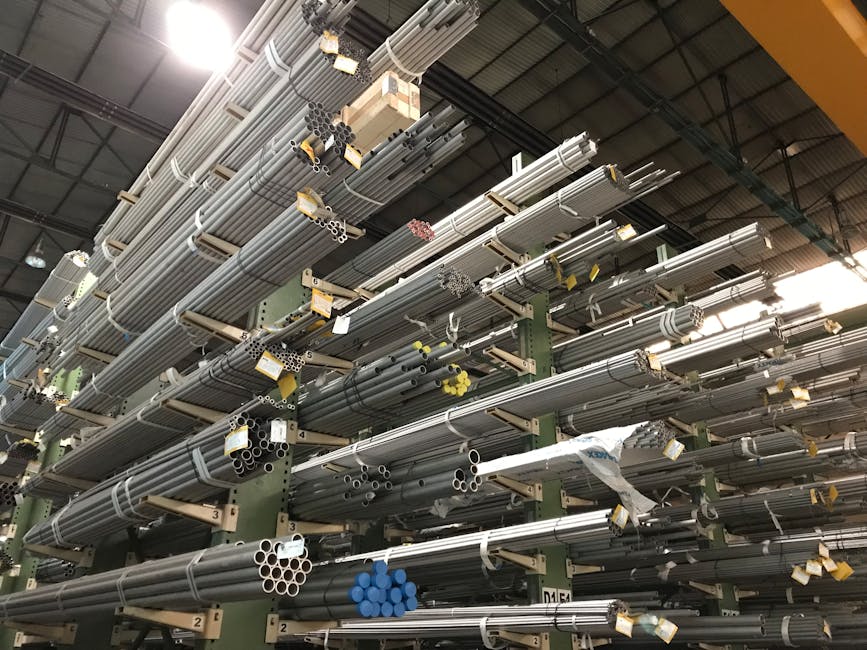 The Art of Pipeline Stringing: A Comprehensive Guide to Efficient Pipeline Construction
The Art of Pipeline Stringing: A Comprehensive Guide to Efficient Pipeline Construction
Pipeline stringing is a crucial phase in the construction of pipelines, involving the placement of pipes along the right-of-way to prepare them for welding and burial. It requires meticulous planning, precision, and expertise to ensure that the pipes are laid out correctly, minimizing the risk of errors, delays, and cost overruns. In this article, we will delve into the world of pipeline stringing, exploring its importance, benefits, and challenges, as well as the equipment and techniques used in this complex process.
The Importance of Pipeline Stringing
Pipeline stringing is a critical component of pipeline construction, as it sets the stage for the entire project. The accuracy and efficiency of this phase have a direct impact on the overall success of the project. A well-executed stringing operation ensures that the pipes are properly aligned, reducing the risk of weld failures, leaks, and other defects that can lead to costly repairs and downtime. Moreover, a smooth stringing process helps to maintain the project schedule, reducing the likelihood of delays and associated costs.
Benefits of Pipeline Stringing
The benefits of pipeline stringing are numerous and far-reaching. One of the most significant advantages is the reduction of construction time and costs. By laying out the pipes in a precise and efficient manner, contractors can minimize the time spent on welding, coating, and burying the pipes, resulting in significant cost savings. Additionally, pipeline stringing helps to improve the quality of the pipeline, reducing the risk of defects and ensuring that the pipeline meets the required safety and performance standards.
Another benefit of pipeline stringing is the enhancement of worker safety. By minimizing the need for manual handling and manipulation of pipes, contractors can reduce the risk of accidents and injuries. Furthermore, the use of specialized equipment and techniques in pipeline stringing helps to reduce the physical demands on workers, promoting a safer and healthier work environment.
Challenges of Pipeline Stringing
Despite its importance and benefits, pipeline stringing is a complex and challenging process. One of the biggest challenges is the need to navigate difficult terrain, including steep slopes, rocky terrain, and environmentally sensitive areas. Contractors must also contend with inclement weather conditions, such as extreme temperatures, high winds, and heavy rainfall, which can impact the accuracy and efficiency of the stringing operation.
Another challenge is the need to manage and coordinate the movement of large and heavy pipes, which requires specialized equipment and expertise. Contractors must also ensure that the pipes are properly aligned and spaced, taking into account factors such as pipe diameter, wall thickness, and coating requirements.
Equipment Used in Pipeline Stringing
The equipment used in pipeline stringing is specialized and designed to handle the unique demands of this phase. One of the most critical pieces of equipment is the pipe layer, a machine that lifts and places the pipes along the right-of-way. Pipe layers are typically mounted on tracks or wheels, allowing them to move along the pipeline route with ease.
Other equipment used in pipeline stringing includes pipe benders, which are used to bend the pipes to fit around curves and corners, and pipe handlers, which are used to lift and manipulate the pipes into place. Contractors may also use specialized tools, such as pipe alignment systems, to ensure that the pipes are properly aligned and spaced.
Techniques Used in Pipeline Stringing
The techniques used in pipeline stringing are designed to maximize efficiency and accuracy, while minimizing the risk of errors and defects. One of the most common techniques is the use of a “stringing crew,” a team of experienced workers who specialize in pipeline stringing. These crews work together to lay out the pipes, using a combination of manual and mechanical methods to ensure that the pipes are properly aligned and spaced.
Another technique used in pipeline stringing is the use of “staked” pipes, where the pipes are temporarily anchored to the ground using stakes or pins. This technique helps to maintain the alignment and spacing of the pipes, reducing the risk of movement or shifting during the welding and coating process.
Pre-Stringing Preparation
Before commencing the stringing operation, contractors must undertake a range of preparatory activities to ensure that the pipeline route is ready for pipe laying. This includes clearing and grading the right-of-way, removing any obstacles or debris, and marking the pipeline route with stakes and flags.
Contractors must also conduct a thorough survey of the pipeline route, identifying any potential hazards or challenges, such as steep slopes, rocky terrain, or environmentally sensitive areas. This information is used to develop a detailed stringing plan, which outlines the equipment, techniques, and resources required to complete the stringing operation.
Post-Stringing Activities
Once the stringing operation is complete, contractors must undertake a range of post-stringing activities to prepare the pipeline for welding and burial. This includes inspecting the pipes for any damage or defects, applying a coating to protect the pipes from corrosion, and welding the pipes together to form a continuous pipeline.
Contractors must also ensure that the pipeline is properly aligned and spaced, using specialized equipment and techniques to make any necessary adjustments. Finally, the pipeline is buried, using a combination of trenching and backfilling to protect the pipeline from environmental factors and ensure its long-term integrity.
Conclusion
Pipeline stringing is a critical phase in the construction of pipelines, requiring meticulous planning, precision, and expertise. By understanding the importance and benefits of pipeline stringing, as well as the challenges and techniques involved, contractors can ensure that this phase is completed efficiently and effectively, setting the stage for a successful pipeline construction project. Whether you are a seasoned contractor or a newcomer to the industry, a thorough understanding of pipeline stringing is essential for delivering high-quality pipelines that meet the required safety and performance standards.
Overwhelmed by the Complexity of ? This May Help
6 Facts About Everyone Thinks Are True


 Mastering the Complexities of Pipeline Logistics: A Comprehensive Guide
Mastering the Complexities of Pipeline Logistics: A Comprehensive Guide “Unlocking the Power of AI-Driven Subscription Pricing Strategies”
“Unlocking the Power of AI-Driven Subscription Pricing Strategies” In today’s fast-paced and highly competitive market, pricing plays a critical role in the success of businesses across industries. Consumers have access to an abundance of online information, making them more price-conscious than ever. To stay competitive, businesses must constantly monitor market trends, competitor pricing, and customer behavior. This is where AI-powered price intelligence software comes in, offering advanced analytics and automation to optimize pricing strategies and maximize profitability.
In today’s fast-paced and highly competitive market, pricing plays a critical role in the success of businesses across industries. Consumers have access to an abundance of online information, making them more price-conscious than ever. To stay competitive, businesses must constantly monitor market trends, competitor pricing, and customer behavior. This is where AI-powered price intelligence software comes in, offering advanced analytics and automation to optimize pricing strategies and maximize profitability.
 Swamp Stomp: A Journey Through Louisiana’s Alligator Country
Swamp Stomp: A Journey Through Louisiana’s Alligator Country